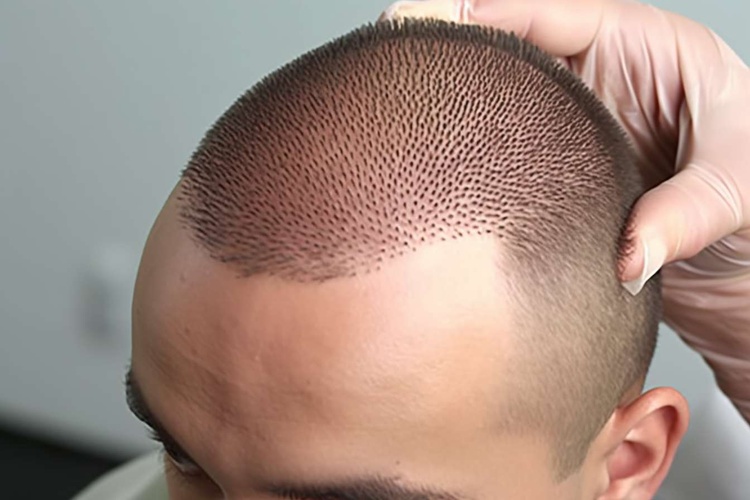Restore Your Hair: Complete Guide to Hair Transplants
Hair transplantation offers a long-term option for people battling hair loss, from genetic thinning to pattern baldness. This comprehensive guide explains who is suitable for a transplant, compares FUE and FUT techniques, outlines the procedure, reviews costs and providers, and lists risks and recovery expectations to help you make an informed decision about restoring your natural hairline.

Hair loss affects confidence and appearance for many people, but modern hair transplantation can provide lasting, natural-looking results. This guide walks through who benefits most from a transplant, the main surgical approaches, what to expect before and after surgery, typical costs and clinic options, and the possible complications so you can plan wisely.
Who makes a good candidate for a hair transplant?
Not everyone with thinning hair is a suitable candidate. Common characteristics of ideal candidates include:
- Androgenetic alopecia (male or female pattern baldness) with distinguishable donor areas.
- A stable pattern of hair loss rather than rapidly progressing shedding.
- Adequate donor hair density (usually from the back and sides of the scalp) to cover the thinning regions.
- Overall good health and an ability to tolerate a minor surgical procedure under local anesthesia.
- Realistic expectations about gradual results and the limits of transplantation.
A consultation with a board-certified hair transplant surgeon is essential. During assessment, the surgeon evaluates your hair loss stage, donor hair quality, medical history, and aesthetic goals to recommend a personalized plan.
Main transplantation techniques and how they differ
Two primary techniques dominate contemporary practice:
-
Follicular Unit Transplantation (FUT): Often called the strip method, FUT involves removing a narrow strip of scalp from the donor area. That strip is microscopically dissected into individual follicular units, which are implanted into the recipient sites. FUT can produce a large number of grafts in one session but leaves a linear scar concealed within the hair.
-
Follicular Unit Extraction (FUE): FUE removes individual follicular units directly from the donor area with a tiny punch tool. This approach avoids a continuous scar and typically offers faster recovery and less post-operative tightness. FUE may be preferred by those who wear short hairstyles or want minimal linear scarring.
Some clinics offer variations such as DHI (a modified FUE technique) or robotics-assisted extraction. Each method has trade-offs: FUT can be more efficient for very high graft counts, while FUE provides greater flexibility and fewer visible scars. The choice depends on hair loss extent, donor supply, scarring concerns, and patient preference.
What to expect during the procedure
A typical transplant day follows several predictable steps:
- Preoperative consultation and planning of the hairline and graft distribution.
- Cleansing and marking of donor and recipient zones.
- Local anesthesia to numb the scalp; the procedure is usually done awake with sedation optional.
- Donor harvesting using FUT (strip removal) or FUE (individual follicle extraction).
- Creation of recipient sites—tiny incisions made to mimic natural hair angles and direction.
- Placement of grafts into the recipient incisions with careful orientation to achieve a natural look.
- Dressing or light bandaging of treated areas and instructions for home care.
Procedures can last several hours, depending on graft numbers. Most patients return home the same day and can resume light activities within a couple of days, though strenuous exercise is typically postponed for a few weeks.
| Provider | Location | Technique | Estimated Cost Range |
|---|---|---|---|
| Bosley | Multiple US locations | FUE, FUT | $4,000 - $15,000 |
| Hair Club | Nationwide, USA | FUE, FUT | $5,000 - $15,000 |
| Bernstein Medical | New York, USA | FUE | $8,000 - $20,000 |
| DHI Global | Worldwide | DHI (modified FUE) | $5,000 - $15,000 |
| Vera Clinic | Istanbul, Turkey | FUE | $2,500 - $5,000 |
Prices, rates, or cost estimates mentioned above are approximate and may change over time. Independent research is advised before making financial decisions.
Costs vary based on graft count, technique, surgeon experience, clinic location, and any added services (such as PRP or postoperative medications). Medical tourism can reduce fees significantly, but weigh savings against travel, follow-up care, and clinic reputation. Prioritize surgeon skill and documented results over the lowest price.
Potential risks and side effects
Hair transplantation is generally safe when performed by an experienced team, but like any surgical intervention it carries risks, including:
- Infection at donor or recipient sites.
- Bleeding or prolonged scabbing.
- Scarring—linear with FUT, small dot scars with FUE.
- Unnatural hair direction or density if graft placement is not expertly done.
- Shock loss, a temporary shedding of native hairs around the transplant area.
- Sensory changes such as numbness or tingling that usually resolve over months.
Most complications are transient and manageable. Choosing an accredited clinic and an experienced surgeon reduces risk and improves aesthetic outcomes.
Making an informed decision
If you are considering a transplant, gather multiple consultations, review patient photos and long-term results, and ask about a clinic’s infection control, graft survival rates, and post-op support. Expect a gradual improvement: initial shedding of transplanted hairs is normal, and visible growth commonly begins several months later with final results often apparent by 12–18 months.
Careful planning, realistic expectations, and expert execution are the foundations of a successful hair restoration. Discuss medical conditions, medications, and lifestyle factors with your surgeon so they can tailor a safe, effective plan to restore your hairline.
This article is for informational purposes only and should not be considered medical advice. Please consult a qualified healthcare professional for personalized guidance and treatment.






